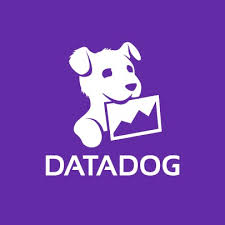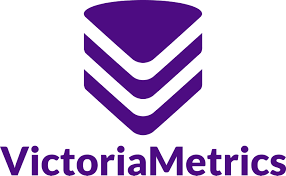Look, if you’re buried in logs and Loki’s starting to feel like a chore-the indexing mess, the constant tuning-it’s time to look elsewhere. Loki works fine for small stuff, but when your apps grow, you need something that just works. We’ve pulled together the top alternatives from the big players in observability. These are proven, used by teams actually shipping code. Open-source or enterprise-grade, each has a clear edge. No hype, just what you need to know to pick the right one and get back to building. Let’s jump in.

1. AppFirst
AppFirst was built to let developers describe what an app needs – like CPU specs, a database, or networking – and it handles all provisioning automatically across clouds such as AWS, Azure, or GCP. Logs, monitoring, and alerts are integrated from the start, providing visibility without extra setup, and everything ties into centralized audits for changes or costs per environment. Switching providers requires only the same app definition while AppFirst swaps in equivalent resources, adhering to each cloud’s best practices. No one needs to touch Terraform or YAML; the focus remains on the code.
Deployment options include managed SaaS for quick starts or self-hosting when control is a priority, with security standards applied by default to ensure compliance. Pricing details are available after joining the waitlist, but the core approach remains straightforward without hidden complexities. Currently in launch mode, early access is granted to those on the waitlist.
נקודות עיקריות:
- Automatic provisioning of compute, databases, messaging, networking, IAM, secrets
- Built-in logging, monitoring, alerting with cost visibility
- Cross-cloud support for AWS, Azure, GCP
- SaaS or self-hosted options
- Abstracts infrastructure code like Terraform or YAML
Who it’s best for:
- Developers deploying without infra code
- Organizations enforcing standards across teams
- Groups ditching custom platform builds
פרטי קשר:
- אֲתַר אִינטֶרנֶט: www.appfirst.dev

2. SigNoz
SigNoz pulls together logs, metrics, and traces into one dashboard, leaning hard on OpenTelemetry for how data flows in and connects up. Developers grab APM tools to watch app performance, dig into distributed traces for spotting slowdowns across services, and handle log searches that scale without much fuss. The setup uses ClickHouse as its backend store, which keeps queries zippy whether folks are building custom dashboards or running PromQL checks. Ingestion pulls from a bunch of sources, and everything ties back to OpenTelemetry standards to keep things consistent without locking into one vendor’s way of doing it.
On the deployment side, options split between self-hosting for full control or jumping on cloud services, with spots to stash data in different regions if compliance matters. Querying stays flexible with a drag-and-drop builder or straight SQL-like dives into ClickHouse, plus API keys to lock down access. Enterprise add-ons layer in SSO and secure links to clouds like AWS, but the core stays open-source and tweakable. Pricing runs on usage, hitting folks only for the metric samples they send over, skipping charges for team size or server counts.
נקודות עיקריות:
- Open-source base with OpenTelemetry baked in for traces, logs, and metrics
- ClickHouse storage for quick queries and custom dashboards
- Ingestion from multiple sources with signal correlation
- Self-host or cloud deployment, regional data options
- Usage-based pricing at a flat rate per million samples
Who it’s best for:
- Folks wanting an all-in-one observability spot without vendor ties
- Teams heavy on distributed apps needing trace-log links
- Developers who like open-source tweaks and PromQL querying
פרטי קשר:
- Website: signoz.io
- LinkedIn: www.linkedin.com/company/signozio
- Twitter: x.com/SigNozHQ

3. Logz.io
Logz.io stitches logs, metrics, and traces into a unified view, with AI agents woven right into the workflows to handle queries in plain English. The platform starts from open-source roots like ELK and Prometheus, shifting to managed services that cover anomaly spotting in metrics or bottleneck hunts in traces. Log management cuts through clutter by filtering noise, while the overall setup pushes real-time alerts and dashboards that adapt to whatever stack runs underneath. Integrations hook into clouds, containers, and databases without much hassle, keeping the data flow smooth.
Deployment is managed, easing the jump from self-run tools, and the AI side automates parts of investigations to shave time off fixes. It scales for bigger data loads, with built-in ways to trim costs by eyeing what telemetry actually pays off. A free trial runs for fourteen days, letting users poke around the full platform before committing—no ongoing free tier mentioned, but paid access unlocks the AI agents, integrations, and scaling features without per-user fees.
נקודות עיקריות:
- AI agents for natural language queries and automated analysis
- Unified platform from ELK and Prometheus open-source bases
- Over three hundred integrations for clouds and apps
- Managed deployment with migration paths
- Fourteen-day free trial covering core features
Who it’s best for:
- Operations crews dealing with messy distributed setups
- Groups eyeing AI to speed up debugging without extra tools
- Teams scaling from open-source logs to managed observability
פרטי קשר:
- Website: logz.io
- Email: sales@logz.io
- Address: 77 Sleeper St, Boston, MA 02210, USA
- LinkedIn: www.linkedin.com/company/logz-io
- Twitter: x.com/logzio

4. Graylog
Graylog centers on log management with SIEM and API security folded in, giving security and ops folks a spot to centralize data without extra stacks for routing or storage. The platform processes logs from various spots, automates threat detection, and lets users preview archived stuff before pulling it back— all while keeping costs tied to what gets ingested. AI sits built-in for faster investigations, cutting errors in sifting through events, and pipelines handle routing across platforms on whatever terms fit the setup.
Deployment flexes between cloud, on-prem, or hybrid, delivering the same log search, alerting, and visualization no matter the choice. Open-source roots offer a free entry point for basics like collection and basic analysis, but enterprise versions add speed, scale, and security layers without surprise licensing hits. Demos stand ready for hands-on looks, and the whole thing avoids rigid vendor grips by baking in controls for data tiers and restores.
נקודות עיקריות:
- SIEM and log management with API protection
- Built-in pipelines for routing and cost controls
- AI for investigation speed and error reduction
- Open-source core, enterprise for added scale
- Flexible deployment across cloud or on-prem
Who it’s best for:
- Security operators chasing threats in log floods
- Ops handling mixed environments with budget watches
- Users starting open-source and scaling to enterprise needs
פרטי קשר:
- אתר אינטרנט: graylog.org
- Email: info@graylog.com
- Address: 1301 Fannin St, Ste. 2000 Houston, TX 77002, USA
- לינקדאין: www.linkedin.com/company/graylog
- פייסבוק: www.facebook.com/graylog
- טוויטר: x.com/graylog2

5. Elastic
Elastic centers on the ELK Stack – Elasticsearch for storage and search, Kibana for dashboards, and Beats or Agent for pulling in data from apps and servers. Logs feed into Elasticsearch where JSON documents get indexed for fast lookups, while Kibana builds charts, heatmaps, or time series views without needing extra plugins for basic use. Integrations cover common sources so data starts flowing after a quick config, and the whole thing runs on-prem or in the cloud.
Open-source downloads handle core search and visualization, but managed cloud or enterprise versions add machine learning for anomaly detection and security layers for access control. A free trial spins up the full stack in the cloud, and self-host stays free for the base ELK components. Paid tiers bring automated ops, reporting, and support for larger clusters.
נקודות עיקריות:
- ELK Stack with Elasticsearch, Kibana, and Beats
- JSON document search with real-time indexing
- Prebuilt integrations for apps and infrastructure
- Open-source self-host or managed cloud options
- Free trial for cloud, base ELK free forever
Who it’s best for:
- Ops handling large log volumes with custom queries
- Setups needing flexible dashboards and visualizations
- Users starting open-source and scaling later
פרטי קשר:
- אתר אינטרנט: www.elastic.co
- Address: Keizersgracht 281 1016 ED Amsterdam
- Email: info@elastic.co
- לינקדאין: www.linkedin.com/company/elastic-co
- פייסבוק: www.facebook.com/elastic.co
- טוויטר: x.com/elastic

6. דאטאדוג
Datadog’s log management pulls in data from across the stack, handling everything from quick filters to deep dives without forcing a learning curve on query syntax. Logs sit alongside metrics and traces in one spot, so spotting a blip in performance means flipping straight to related events or app spans with a click. Pipelines process incoming stuff automatically for common setups, adding tags or context from outside sources, and Flex Logs let users tweak what sticks around long-term versus what gets archived but still queryable later. Watchdog flags odd patterns on its own, while Pattern Inspector breaks down repeats to show where values cluster.
The setup runs as a SaaS service, scaling to handle heavy loads without manual tweaks, and forwards cleaned logs to other tools if needed. A fourteen-day free trial opens up the full suite, including these log features, with no card upfront. Paid plans layer on longer retention, compliance bits like PCI, and role-based access, billed based on volume ingested and queried.
נקודות עיקריות:
- Unified view of logs with metrics and traces
- Flex Logs for adjustable storage and rehydration
- Out-of-the-box pipelines for over two hundred technologies
- Watchdog for anomaly detection and pattern analysis
- Fourteen-day free trial of the whole platform
Who it’s best for:
- Developers chasing issues across hybrid clouds
- Security folks linking logs to threats fast
- Larger ops groups needing scalable archiving
פרטי קשר:
- אתר אינטרנט: www.datadoghq.com
- טלפון: 866 329-4466
- Email: info@datadoghq.com
- Address: 620 8th Ave 45th Floor, New York, NY 10018
- לינקדאין: www.linkedin.com/company/datadog
- טוויטר: x.com/datadoghq
- אינסטגרם: www.instagram.com/datadoghq
- App Store: apps.apple.com/app/datadog
- Google Play: play.google.com/store/apps/details?id=com.datadog.app

7. Sumo Logic
Sumo Logic gathers logs from cloud, on-prem, and hybrid spots into a central hub, parsing fields no matter the format to make searches straightforward for new hands or pros. Queries run quickly on big piles of data, pulling up trends like error clusters tied to versions, and the platform mixes in metrics plus traces for fuller pictures during digs. AI agents handle triage on alerts, correlating threats across signals, while custom reports and real-time feeds keep everyone looped in without extra hops.
As a cloud-native SaaS, deployment skips hardware worries, with integrations hitting four hundred fifty sources for smooth pulls. A thirty-day trial gives full access sans card, covering ingestion, analysis, and alerts. Paid versions add compliance certs like SOC two and FedRAMP, charging per gigabyte ingested with flex licensing to match usage spikes.
נקודות עיקריות:
- Cloud-native collection from diverse environments
- Field extraction and fast queries on varied formats
- AI for alert triage and threat correlation
- Unified logs, metrics, traces with four hundred fifty integrations
- Thirty-day free trial including core analytics
Who it’s best for:
- Security analysts sifting hybrid threats
- Engineers building custom reports on logs
- Compliance-heavy setups eyeing multi-tenant access
פרטי קשר:
- אתר אינטרנט: www.sumologic.com
- טלפון: 1-650-810-8700+
- Email: sales@sumologic.com
- Address: 855 Main St., Suite 100, Redwood City, CA 94063, USA
- לינקדאין: www.linkedin.com/company/sumo-logic
- פייסבוק: www.facebook.com/Sumo.Logic
- טוויטר: x.com/SumoLogic

8. SolarWinds
SolarWinds Log Analyzer scoops up events from networks, servers, and apps into a dashboard where keyword hunts or time filters narrow things down without fancy syntax. Real-time views let users tag and sort as logs roll in, tying them to performance charts for quicker root-cause hunts, and AIOps colors alerts to cut noise from the pack. The tool folds into the Orion platform for broader visibility, supporting OpenTelemetry pulls alongside third-party hooks, and forensics mode drills into files or registries for extra security logs.
Self-hosted on-prem or as SaaS, it fits hybrid worlds with a free thirty-day trial of the module, no strings. Paid licenses start as one-time buys for the base, unlocking unlimited nodes and advanced reports, with add-ons for SIEM-like workflows and compliance templates.
נקודות עיקריות:
- Real-time log collection with keyword search and filtering
- AIOps for alert prioritization and noise reduction
- Integration with Orion for performance ties
- OpenTelemetry and third-party source support
- Thirty-day free trial of the full module
Who it’s best for:
- Network admins watching event floods
- IT crews in on-prem heavy shops
- Groups blending logs with security forensics
פרטי קשר:
- אתר אינטרנט: www.solarwinds.com
- Phone: +1-855-775-7733
- Email: sales@solarwinds.com
- Address: 4001B Yancey Rd Charlotte, NC 28217
- לינקדאין: www.linkedin.com/company/solarwinds
- פייסבוק: www.facebook.com/SolarWinds
- טוויטר: x.com/solarwinds
- אינסטגרם: www.instagram.com/solarwindsinc

9. ManageEngine EventLog Analyzer
EventLog Analyzer scoops up logs from devices, apps, and networks using agents or direct pulls, parsing even custom formats through a built-in tool that spots fields on the fly. Security events get correlated for threat patterns, while file watches flag changes to sensitive spots in real time, tying into compliance checks for things like access audits. The dashboard mixes searches with reports, pulling from sources like syslogs or Windows events, and workflows kick off responses when alerts hit certain rules. It’s on-prem software, so installs run locally with options for distributed setups across sites.
A free edition handles up to five log sources forever, covering basics like collection and simple analysis, while paid versions unlock unlimited sources, advanced correlation, and file integrity monitoring starting at five hundred ninety-five dollars per year. The thirty-day free trial gives full access to premium features without needing a card, letting users test the whole suite before picking a plan.
נקודות עיקריות:
- Agentless and agent-based collection from seven hundred fifty sources
- Custom parser for third-party log formats
- File integrity monitoring with real-time change detection
- On-prem deployment with distributed options
- Free edition for five sources, thirty-day full trial
Who it’s best for:
- Security admins auditing network devices
- Compliance officers tracking file accesses
- On-prem shops handling mixed log types
פרטי קשר:
- אתר אינטרנט: www.manageengine.com
- טלפון: 1 408 916 9696+
- Email: pr@manageengine.com
- Address: 4141 Hacienda Drive Pleasanton CA 94588 USA
- לינקדאין: www.linkedin.com/company/manageengine
- פייסבוק: www.facebook.com/ManageEngine
- טוויטר: x.com/manageengine
- אינסטגרם: www.instagram.com/manageengine

10. VictoriaMetrics
VictoriaMetrics acts as a time series store that ingests metrics via Prometheus protocols or direct pushes, handling queries through a familiar syntax while clustering for bigger loads across nodes. Logs slot in alongside metrics for unified views, with downsampling to keep old data handy without ballooning storage, and alerting rules load from cloud buckets if needed. The single-binary setup deploys easy on anything from Pis to fat servers, and enterprise bits add support for tweaks like custom integrations. Open-source core stays tweakable, with cloud hosted for hands-off runs.
Folks grab the open-source version from GitHub at no cost for self-hosting with all core features, or sign up for the cloud with a free tier that covers basic ingestion and queries. Paid enterprise plans layer in dedicated support, performance tweaks, and long-term retention, priced on usage without per-node fees, and a free trial tests the cloud setup sans card.
נקודות עיקריות:
- Prometheus-compatible ingestion and querying
- Clustering from single nodes to data centers
- Log and metric unification with downsampling
- Single-binary for easy deploys
- Open-source free, cloud free tier, enterprise usage-based
Who it’s best for:
- DevOps running Prometheus stacks at scale
- IoT handlers with steady metric streams
- Budget watchers eyeing storage efficiency
פרטי קשר:
- Website: victoriametrics.com
- LinkedIn: www.linkedin.com/company/victoriametrics
- Facebook: www.facebook.com/VictoriaMetrics
- Twitter: x.com/VictoriaMetrics

11. Dash0
Dash0 hooks into OpenTelemetry pipelines to pull logs, metrics, and traces without ripping out existing setups, letting users filter logs by semantic tags or jump from a trace to related events in one view. Dashboards build via Perses for code-managed layouts, and PromQL queries span across data types, pulling in alerts from open-source templates. AI layers quietly parse patterns or suggest filters, while keyboard nav speeds through explorations, and dark mode keeps things easy on the eyes during long sessions. Integrations snap in for sources like Fluentbit or CloudWatch, handling high-cardinality attributes without slowdowns.
Pricing tallies by data points sent, skipping charges for queries or users, with full control via OTel collectors for sampling decisions. A free tier covers basic ingestion and views forever, while paid plans add longer retention and enterprise support, starting after a no-card sign-up that unlocks the full platform right away.
נקודות עיקריות:
- OpenTelemetry-native ingestion for logs, metrics, traces
- Perses-compatible dashboards with code management
- PromQL across data types plus AI pattern detection
- Keyboard-driven UI with dark mode
- Free tier for basics, pay-per-data-point plans
Who it’s best for:
- SREs juggling vendor switches mid-project
- Devs needing trace-log hops without tools
- Platform engineers eyeing open standards
פרטי קשר:
- Website: www.dash0.com
- Email: support@dash0.com
- Address: 169 Madison Ave STE 38218 New York, 10016 United States
- LinkedIn: www.linkedin.com/company/dash0hq
- Twitter: x.com/dash0hq

12. XpoLog
XpoLog deploys in minutes to centralize logs from agents, files, or syslogs, parsing via visual tools that flag fields and enrich events before routing to SIEMs or archives. Searches layer on AI panels to highlight anomalies or trends as results load, with monitors scanning for rules on discovered risks, and an apps marketplace drops prebuilt dashboards for quick compliance views. The viewer handles any log type, profiling data on ingest for mining spots, while PortX side handles stream controls like filtering for cost trims. It’s on-prem or cloud, with compression keeping retention cheap.
A free trial runs thirty days with full features, no card needed, covering collection, analysis, and alerts. Paid editions keep everything unlocked post-trial, priced per node or volume, adding support and custom integrations without limits on data types.
נקודות עיקריות:
- Agentless collection with visual parsing
- AI-augmented search for anomalies and trends
- Apps marketplace for dashboards and monitors
- Stream routing to external services
- Thirty-day free trial of all features
Who it’s best for:
- IT ops correlating cross-system events
- Auditors pulling compliance reports fast
- Hybrid setups trimming log noise upfront
פרטי קשר:
- Website: www.xplg.com
- Phone: +1 917.464.3879
- Email: sales@xplg.com
- Address: 1250 Broadway, 36th Floor New York City, NY 10001, USA
- LinkedIn: www.linkedin.com/company/xpolog
- Facebook: www.facebook.com/Xpolog

13. ספלאנק
Splunk ingests logs, metrics, traces, and events from any source – cloud, on-prem, or hybrid – using agents, OpenTelemetry, or direct connectors, then indexes everything for real-time searches across domains. AI assistants handle natural language queries to dig into issues, while agentic workflows automate triage, correlate alerts with threat intel, and predict outages before they hit. The platform ties security and observability into one view, so ops can spot performance drags and security can trace lateral movement without swapping tools. Custom apps build on top for niche use cases like fraud patterns or SAP monitoring.
Deployment runs as SaaS or self-managed, with add-ons for specific stacks and over two thousand integrations to pull in business data. Free trials let users spin up the full cloud version to test ingestion and AI features, while paid plans scale by data volume ingested, adding enterprise support and compliance modules. Pricing details sit behind sign-up, but the model focuses on workload size rather than user counts.
נקודות עיקריות:
- Unified ingestion for logs, metrics, traces via OpenTelemetry and agents
- AI assistants for natural language and agentic automation
- Threat intelligence correlation and predictive analytics
- Custom apps on extensible data platform
- Free trial of cloud platform, volume-based paid plans
Who it’s best for:
- Security ops blending SIEM with real-time analytics
- IT crews predicting outages across hybrid stacks
- Large shops needing fraud or APM in one place
פרטי קשר:
- אתר אינטרנט: www.splunk.com
- טלפון: 1+415.848.8400
- Email: education@splunk.com
- כתובת: 3098 אולסן דרייב סן חוזה, קליפורניה 95128
- לינקדאין: www.linkedin.com/company/splunk
- פייסבוק: www.facebook.com/splunk
- טוויטר: x.com/splunk
- אינסטגרם: www.instagram.com/splunk
מַסְקָנָה
Wrapping this up, picking a Loki alternative really comes down to what kind of mess you’re dealing with day-to-day. If you’re buried in raw logs and just need something that grabs everything without fuss, go for the ones that handle volume without choking. But if you’re chasing performance bugs across services, lean toward tools that stitch traces and metrics together – it saves that awful ping-pong between dashboards. Some setups demand on-prem control, others thrive in the cloud with zero upkeep. Either way, most of these give you a solid free tier or trial to kick the tires before committing.
At the end of the day, the right pick is the one that gets out of your way. You shouldn’t be wrestling with config just to see why something broke at 2 a.m. Test a couple, see what clicks with your workflow, and ditch the ones that make you write more YAML. Your future self – the one not debugging log ingestion at midnight – will thank you.


